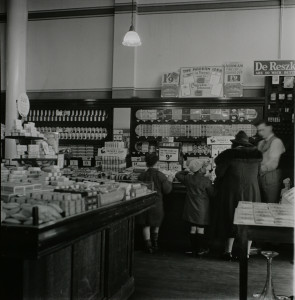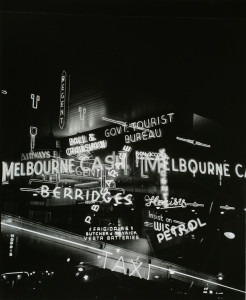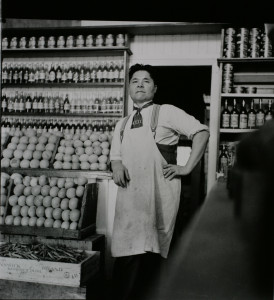Tairāwhiti WW2 Memories: Clothing and household supplies
Tairāwhiti WW2 Memories: Clothing and household supplies
Download as a PDF 4 World War II Clothing and household supplies
Wool was in particularly short supply in the early years of the war. This impacted the ability of knitters to provide the items such as socks and balaclavas which they had been asked to make for the armed forces. By August 1940, although some wool had been made available for patriotic knitters, home knitters were finding it increasingly difficult to obtain supplies.
The manager of one large Gisborne store said to-day that the present stocks were not a quarter of those usually carried…….Women could no longer pick and choose what shade and type of wool they required; they had to take what they could get. Since the outbreak of war the number of knitters has increased greatly and there has been a decrease in the supplies of wool available. He also noted that the home manufacture of knitted garments seems to have been stimulated by the war. Women who have been making garments for soldiers have been encouraged to go on, and make garments for themselves and their friends also. The scarcity, therefore, does not apply only to heavy and drab types of colours suitable for service wear, but to almost every shade and weight.[1]
This shortage applied not only to knitting wool, but to woollen garments such as schoolgirls’ stockings. In view of this, it was decided that the girls at the Gisborne High School would be permitted to wear navy blue socks in summer instead of full-length stockings.[2] The shortage of knitting wool was still an issue in 1941, and according to one Gisborne retailer, the small supplies which come forward from time to time are usually snapped up as quickly as the public knows stocks are on hand. Sometimes even before the consignment is opened up, nothing is left for display, because of the large orders on the waiting list. If any small quantity is left, it seldom lasts for more than a few hours.[3]
In spite of the shortage of wool, when rationing of women’s stocking was introduced at the end of April in 1942, stockings containing cashmere or wool were exempt from the restrictions which only applied to silk, artificial silk or lisle stockings.[4] A month later the Minister of Supply announced the immediate rationing of clothing, footwear and household linen.[5] In Gisborne this resulted in what was described as a rationing stampede, as many hundreds of shoppers crowded into clothing shops in an endeavour to secure goods before the retailers demanded the surrender of ration coupons in exchange for the purchases. The position was so difficult that retailers found it necessary to close their doors for a few hours. Officially, rationing commenced from the time of opening of the shops for business yesterday, but this was unknown to either the retailers or the general public until slowly the truth began to leak out. In the absence of information as to how rationing was to operate, the retailers carried on as usual. By noon, business was unusually brisk for that time of the day, and shortly afterwards the buying developed into a hectic rush and then even a stampede. By that time, shops were full to overflowing. Depleted staffs were doing their best to cope with the frenzied demand…..Eventually, the retailers concerned decided on the only alternative that they felt would provide a solution of the position. They called a meeting, and decided to close their doors, and one by one the clothing shops closed up and their ‘most hectic ‘few hours for a long time came to an end…..One of the businessmen concerned characterised the rush as a most foolish one. Many people appeared ‘to be buying just for the sake of beating the rationing scheme’ and hot because they really required their purchases.[6]
In October it was announced that clothing in the Dominion is to be more austere. All frills and trimmings are to go under restrictions introduced under the factory emergency regulations.[7] This is spite of the fact that manufacturers had already decided to introduce new styles which would be simple but effective and the reduction in material would not affect attractiveness of design.[8]In December it was announced that second-hand clothing (which in some cases had required surrender of coupons) could now be purchased coupon-free.[9]
Reports on the prospects for Christmas trade give a great insight the availability of various consumer items. In 1942 it was considered that the main difficulty for shoppers will be with the three Cs —confectionery, crockery and canned goods. Biscuits were also practically off the market for the time being. It was noted that the toys – now more or less all made in New Zealand were better than those available in 1941, and that manufacturers had shown much ingenuity in adopting a modern design and turning out an amazing variety, principally in wood.[10] Leading up to the Christmas of 1943, it was the demand for camping equipment which was noteworthy. No-one was quite sure exactly why this was : it is hard to tell whether the general shortage of petrol, or the allowance of extra consumption for the Christmas period is responsible for the demand,” a shopman said. “Many motorists are taking the opportunity of going afield for their holidays, and they want tents. Scores of families are planning to spend holidays on the beaches and at inland resorts near to Gisborne, on the other hand, and they want tents just as much. The present position, whatever the prime cause, represents almost a bolt for the open-air life. Possibly it is one of the effects of the return of many men from army life overseas and in New Zealand. “In their camps, during military life, they have learned the art of making themselves comfortable under canvas. Some of them lived in tents for the first time when they joined the forces; and found it attractive in good weather. This may have some effect upon the appetite of the general public for tent life.[11]
Woollen items were still in short supply through 1943 – the availability of blankets in particular was becoming a problem. A shortage at the Heni Materoa Children’s home had made the substitution of woollen eiderdowns necessary for the winter.[12] The nationwide shortage was such that in January 1944 approaches were made to the Army regarding making stocks available for civilian use.[13] They were still in short supply in the winter of that year, and it was not only civilians who found them difficult to obtain, but returning servicemen who were trying to set up their homes again. In some cases families up the coast were forced to use dried sheepskins instead.[14]
Other items in short supply that year were boys’ suits and school shorts – almost impossible to procure, according to the Herald editorial, which also commented that Lucky, indeed, has been the mother skilled in the art of cutting down for rapidly growing youngsters such adult apparel from the family wardrobe which may have been fit for reproduction in abbreviated form.[15]By Christmas time the clothing situation had improved slightly in some lines.Once again there were plenty of wooden toys, and a good range of dolls. There were good supplies of stationery and books, handkerchiefs, scarves, and paua shell goods and there was an abundance of men’s but not women’s watches. Supplies of tobacco were not expected to meet demand, and decorative crockery was also scarce.[16]
Clothing shortages continued through 1945. In June the Cook County Women’s Guild undertook to supply warm winter overcoats for the children of the Heni Materoa Home who were reported to be in need of them. The committee agreed to unpick, wash and press adult overcoats, which were all that could be made available, for re-cutting and modelling to suit the children. An offer by the Girl Guide Ranger Company to assist in the repairing of children’s garments was warmly received by committee members, several of whom expressed their gratification for such an offer. The company indicated that they would be willing to go to the home one night a week to do darning and mending, and the committee was very grateful for the assistance they would be able to render in the repairing of the clothing of the 28 children.[17]
In October the opinion of Gisborne retailers was that although the clothing position was acute, it would continue to be so for some time before the problems which surround a conversion from war to peacetime production can be surmounted. The main problem continued to be the supply of men’s clothing. Daily large numbers of men are returning to civil life and these men are finding it difficult to clothe themselves.[18] The situation was much the same at the end of 1946.[19] As one letter writer put it, We have had shortages of houses, tyres, tobacco, matches, suits, shirts, pyjamas, baby clothing, blankets, starch, gas, coal, electricity, jam, honey, treacle, syrup, biscuits, tinned fruits, dried fruits and so on. We have no salmon, or sardines; about a year ago a license to import sardines, then available, was refused. The difficulties of women are best known to themselves but even men suffer discomfort through the shortage of elastic.[20]
– Christine Page, Museum Archivist
[1] The Gisborne Herald 13 August 1940
[2] The Gisborne Herald 17 October 1940
[3] The Gisborne Herald 8 July 1941
[4] The Gisborne Herald 16 May 1942
[5] The Gisborne Herald 29 May 1942
[6] The Gisborne Herald 30 May 1942
[7] The Gisborne Herald 30 October 1942
[8] The Gisborne Herald 30 July 1942
[9] The Gisborne Herald 9 December 1942
[10] The Gisborne Herald 27 November 1942
[11] The Gisborne Herald 18 December 1943
[12] The Gisborne Herald 16 April 1943
[13] The Gisborne Herald 29 January 1944
[14] The Gisborne Herald 18 July 1944
[15] The Gisborne Herald 3 August 1944
[16] The Gisborne Herald 12 December 1944
[17] The Gisborne Herald 15 June 1945
[18] The Gisborne Herald 1 October 1945
[19] The Gisborne Herald 19 December 1946
[20] The Gisborne Herald 19 November 1946




